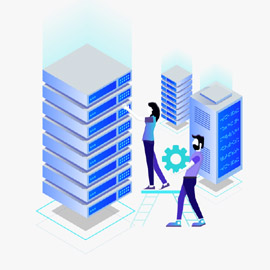A brand of Sustainable Development Networking Foundation (SDNF)
Sustainable Development Networking Foundation (SDNF) is a transformed entity of Sustainable Development Networking Program (SDNP 1997-2006) a project initiated by UNDP, Bangladesh Country Office under the umbrella program of Sustainable Environment Management Program (SEMP) and implemented by Bangladesh Institute of Development Studies (BIDS) of Ministry of Planning.
The project was administered by Ministry of Environment and Forest, Bangladesh. After the completion of the UNDP funded project period over 2006 an Individual trust was formed (SDNF) which registered under the Societies Registration Act of -1860 and continuing the works of SDNP.
SDNF is a not-for-profit, non-political, non-governmental, voluntary, research oriented and charitable foundation. As of its various activities, SDNF now running Bangladesh Internet Exchange (BDIX) a National Internet Exchange of Bangladesh, SDNF ISP a nationwide ISP, providing Colocation Service as Data Center and initiated different activities for local content development. www.sdnf.org.bd

COLOCATION FACILITIES
Operate your facility inside reliable, secure and robust data centers. We provide Private suites, Full Rack and Half Rack even you can put your single 1U / 2U server without any commitment.
This solution is ideal for large mission-critical infrastructures and provides an agile, reliable and secure environment to scale up with ease. The dedicated cold aisle containment offers an optimized and smart cooling & power distribution. It allows remote monitoring and reporting of the delivery of cold air to cabinets, temperature, humidity and power utilization sensors on all server racks. You can get peace of mind to focus on growing your business.

DATA CENTER FACILITIES
We maintain our own data center in Dhaka, Bangladesh and is one of the leading providers of premium web hosting products and data center infrastructure service provider in Bangladesh. Specially We do service with BDIX Traffic. Bangladesh Internet Exchange (BDIX) a National Internet Exchange of Bangladesh, SDNF ISP a nationwide ISP, providing Colocation Service as Data Center and initiated different activities for local content development.
Our data center network has been designed to accommodate clients demanding the highest quality network performance. There is a central focus on redundancy allowing our network to rapidly self-heal failures without interruptions to connectivity. We own our infrastructure.
The complete physical data center security checklist | UTSOB
Keeping data centers safe is paramount for any business. Here are the best ways to physically protect your facility against threats.
Remember, security measures are not solely for the purpose of preventing breaches, but also to reduce the chances of criminals succeeding. Let’s take a look at the best ways you can defend your data center.
1. Physical barriers
For a physical breach to occur at your data center facility, the perpetrators must have found some way to enter the property. Installing a fence with a minimum height of three meters will dissuade intruders and make it much more difficult for those more committed to making their way in. It might also be wise to invest in enclosed server racks that come with additional security measures such as electronic locks.
2. Perimeter wiring
Now that you’ve got a fence surrounding the perimeter of your data center, add an extra layer of protection by wrapping a layer of wire around the top of it. Trembler wire is perfect for the job - an alarm will trip if sensors detect movement or pressure. Additionally, you’ll get a notification of exactly what part of the wire was disrupted, so you can divert your response accordingly.
3. CCTV cameras
It may seem quite self-explanatory, but limiting the number of entry points and combining a variety of video surveillance cameras is a simple way to significantly bolster your physical security. Low-light cameras, motion-detection devices and pan-tilt-zoom cameras will deter intruders and document those who do attempt to breach your facility, digitally storing the evidence off-site.
4. Security officers
Employing guards will keep you one step ahead of any breach. They can man your facility around the clock, with one watching the systems and another following a route around the perimeter, looking for signs of a threat. It’s a preventative method, as it wards off anyone thinking about breaking into your data center.
5. Biometric access
Biometric entry systems significantly improve authentication and identity management in data centers. It’s not dependent on the possession of some physical item, like an access card. Additionally, it’s incredibly difficult to duplicate behavioral and biological characteristics, meaning a very low possibility of being tampered with.
However intricate your security system is, make sure to constantly test it to make sure all components are working as they should be. Moreover, any staff hired for this reason should receive regular training on compliance and processes.
UTSOB Server Hosting
-
BDIX 100Gbps CONNECTIVITY
We have direct peering with BDIX
-
TIER PREMIUM BANDWIDTH
SDNF is a Nationwide Internet Service Provider (ISP). We have redundant connectivity with multiple IIG over the Country with Premium quality of Bandwidth. Providing the highest quality Internet connectivity and performance is our top priority and challenging to us always to keep our datacenter alive worldwide from Bangladesh.
-
DATA CENTER NETWORK SECURITY THREATS AND SOLUTIONS
we have hardware and software support for against DDoS attack, Web Application Attack, DNS Attacks, SSL Blind Spot Exploitation Authentication Attacks.
-
SECURITY ON-SITE
Datacenter access is strictly limited to technical staff. Electronic security systems control data center access and are accompanied by a full complement of motion detecting security cameras which monitor the entire facility. We have a fully managed system, which means we have eyes from our level 3 technicians 24 hours per day remotely and allowing incident response times to be kept to a minimum.